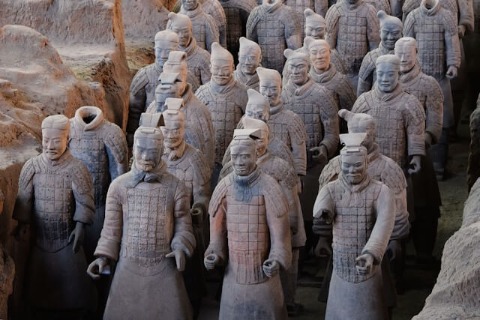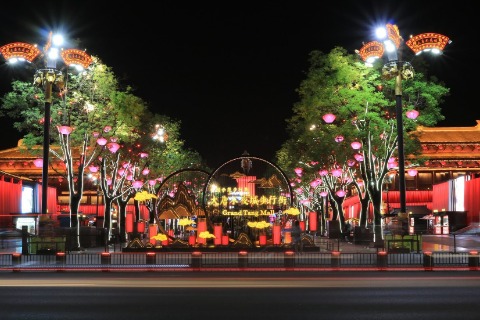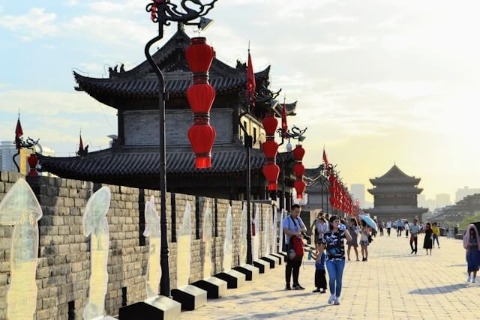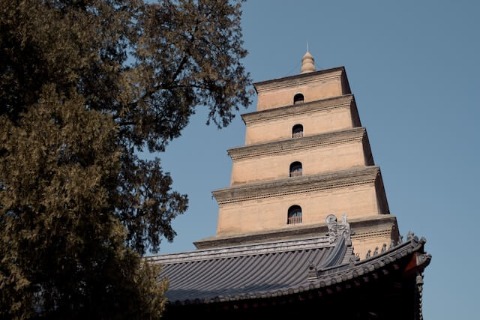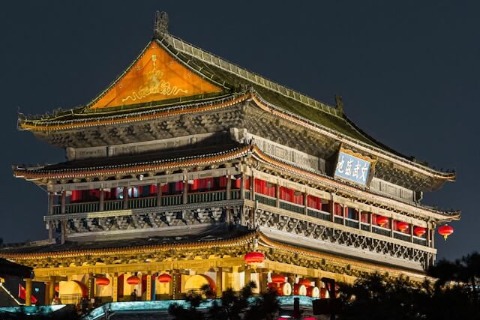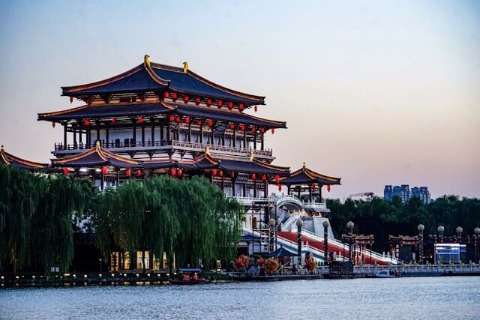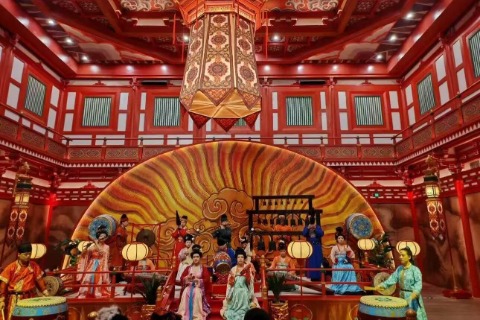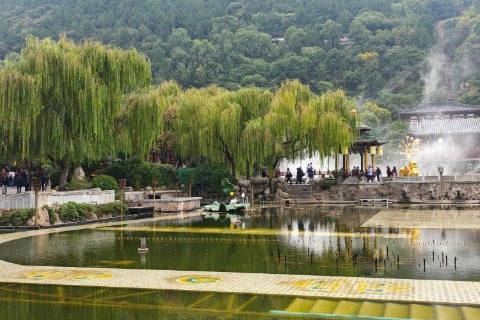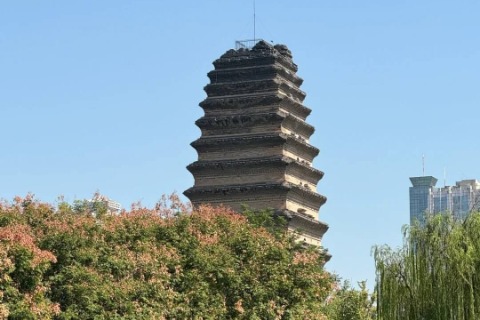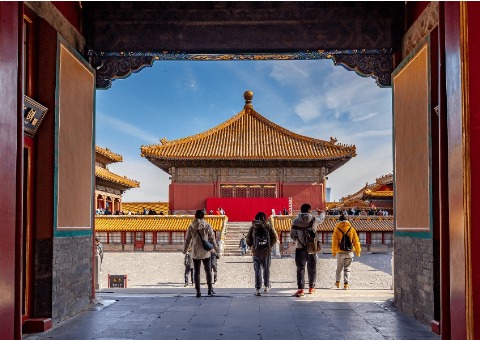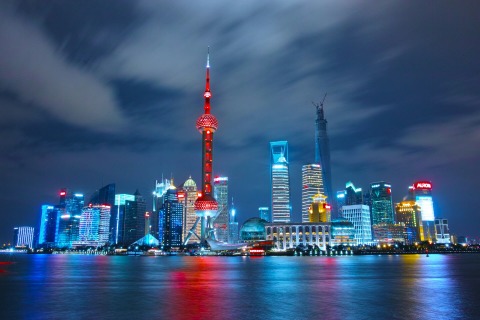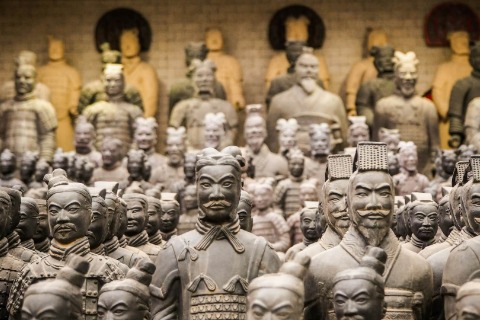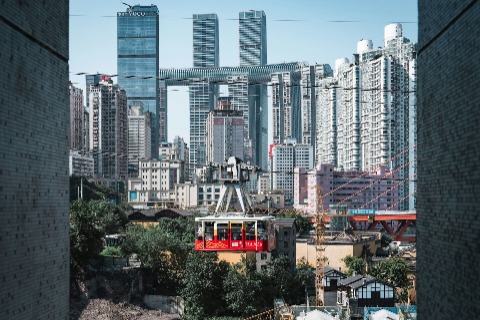Terracotta Army
It’s the only museum in the world dedicated to ancient military power
The Terracotta Army(Chinese Name: 兵马俑) showcases the military strength and culture of the Qin Dynasty. It’s called the “Eighth Wonder of the World.” These figures were made as burial gifts for China’s first emperor, Qin Shi Huang. They were buried for over 2,200 years before being discovered.
The army was built between 246 and 208 BC. It was found between 1974 and 1976, and the museum opened to the public in 1979. It’s the only museum in the world dedicated to ancient Chinese military power, making the Terracotta Army a must-see on any Xi’an travel itinerary.
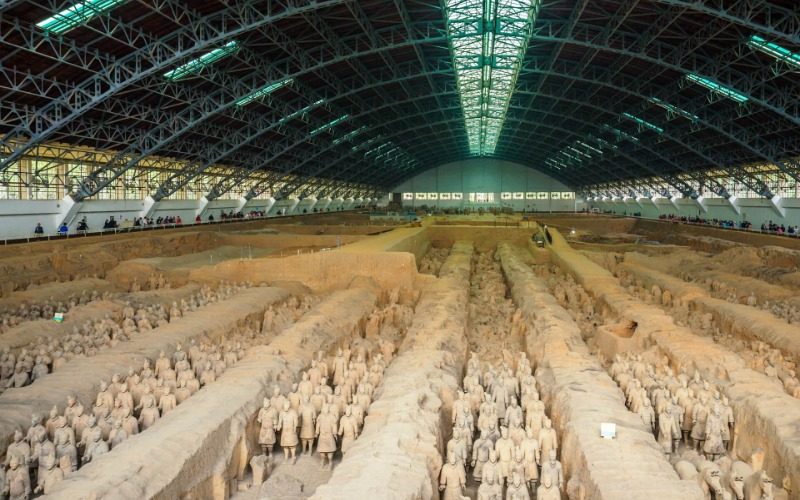
Inside the museum, you’ll find infantry, cavalry, chariots, and generals, all looking lifelike. Besides the soldiers, there are many historical artifacts, including bronze weapons, tools for making pottery figures, and court supplies. They show the culture and lifestyle of the Qin era. The displays have detailed descriptions to help visitors understand this rich history.
As of January 2020, the museum has welcomed over 80 million visitors. It has hosted 187 delegations of foreign heads of state and government. In 1998, U.S. President Bill Clinton, his wife Hillary, and their daughter visited. In 1984, President Ronald Reagan and his wife toured the site. In 1986, Queen Elizabeth II of the UK came to see the Terracotta Army.
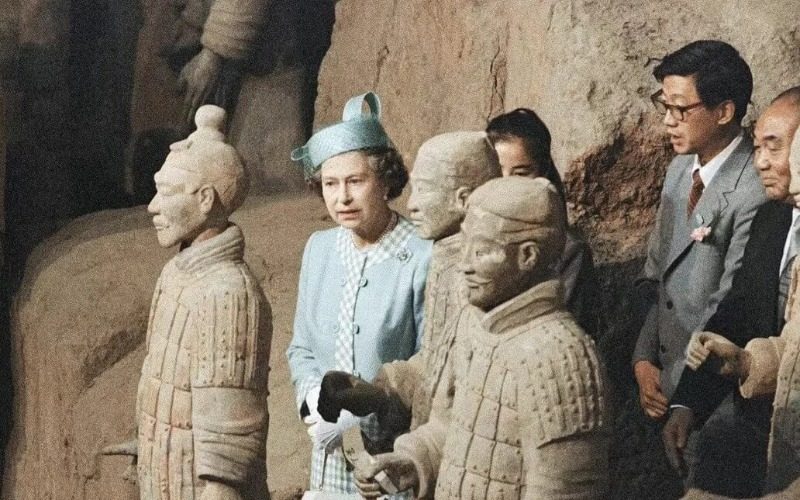
Table of Contents
Highlights of the Terracotta Army
Experience the scale and power of ancient Chinese armies while traveling in Xi’an.
Pit 1 of the Terracotta Army 兵马俑一号坑
Pit One is the largest of the three excavation sites, covering an area of 14,260 square meters. This pit features a rectangular military formation with a mix of chariots and infantry, showcasing the arrangement of troops from over 2,000 years ago. The formation includes vanguards, rearguards, flanks, and a central body.
The discovery of Pit One is of great historical and artistic value. Approximately 6,000 pottery figures and horses have been unearthed, along with over 50 chariots and thousands of weapons. These figures are made to scale, with the average height of the soldiers around 1.8 meters. The horses stand about 1.7 meters tall and are 2 meters long. Each figure has a unique appearance and attire, creating a diverse representation. The hairstyles and clothing details are intricately carved, and even the horses have six teeth, indicating they are in their prime. This realistic sculpting style gives the Qin figures a powerful impact and visual shock.
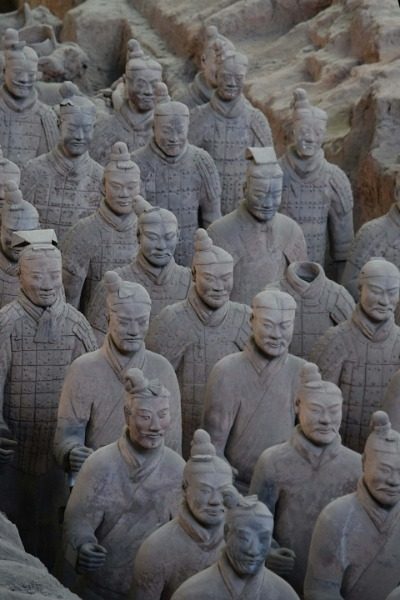
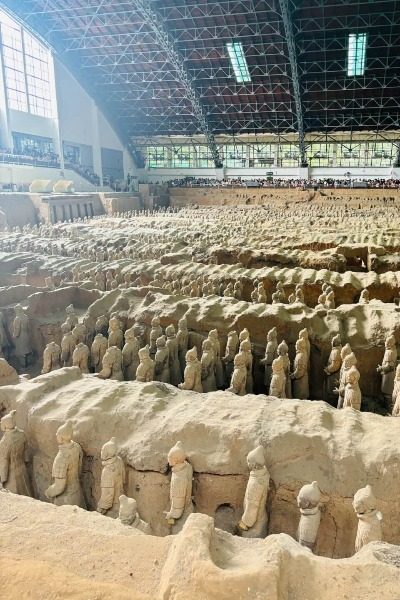
Pit 2 of the Terracotta Army 兵马俑二号坑
The discovery of Pit Two has enhanced our understanding of Qin Dynasty military organization and tactics. It showcases multiple troop types, including cavalry, infantry, chariots, and crossbowmen.
In Pit Two, you can see over 1,300 valuable pottery figures and horses, along with more than 80 chariots and tens of thousands of bronze weapons. Notably, figures like the general, saddle horse, and kneeling archer were found here for the first time, bringing exciting new insights to archaeology.
The layout of Pit Two is divided into four units, each with specific functions. The first unit, in the northeast corner, features a crossbowmen formation made up of standing and kneeling figures. The second unit, in the south, consists of a square formation of chariots. The third unit, slightly north of the center, includes a mixed army of chariots, infantry, and cavalry. The fourth unit, at the northern end, is entirely cavalry. These units are independent yet closely connected, forming a complex military arrangement.
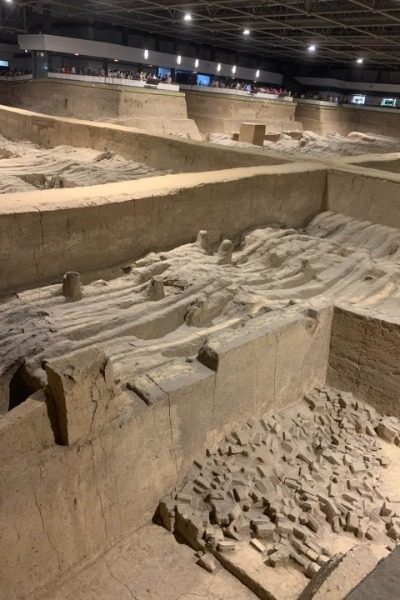
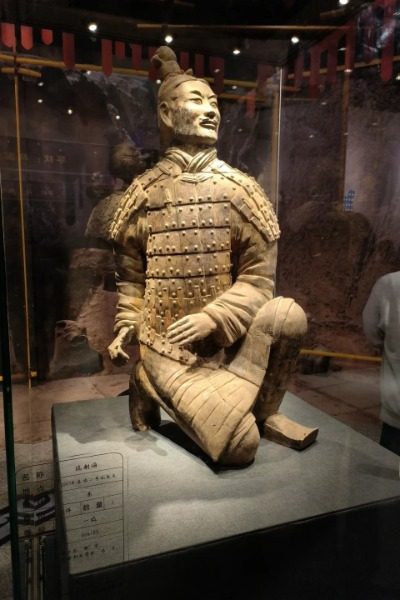
Pit 3 of the Terracotta Army 兵马俑三号坑
Pit Three is the smallest of the three pits, covering just over 520 square meters. Its discovery and study are significant for understanding ancient military tactics and command systems, as it is believed to be the command center for Pits One and Two. This pit was not burned, so many of the pottery figures still have vibrant colors.
Pit Three is divided into three sections: the northern chamber, the southern chamber, and a pit for chariots and horses. It has yielded over 68 pottery figures, 4 horses, 1 wooden chariot, and more than 34 weapons. The northern chamber may have served as a prayer room, while the southern chamber likely functioned as a meeting hall.
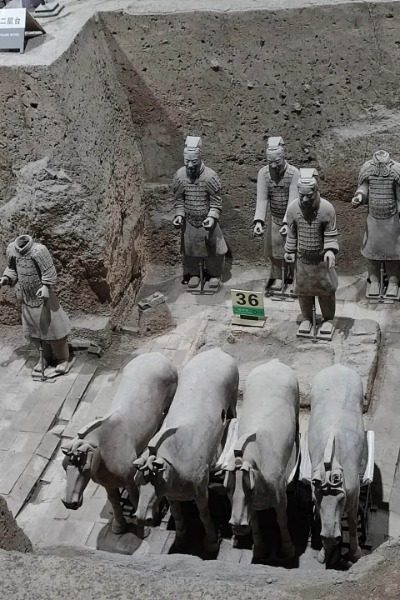
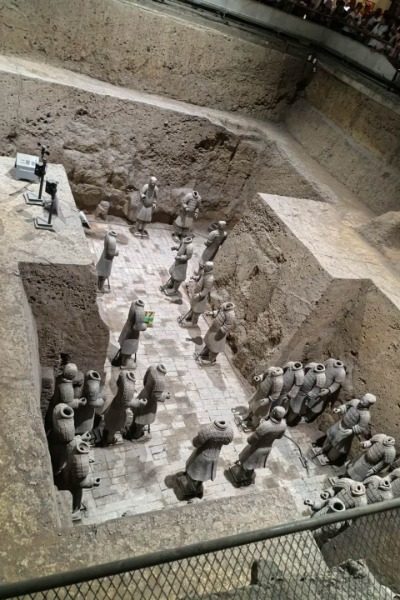
Undug Terracotta Army Pits 待挖掘的兵马俑坑
Currently, only 3 pits of the Terracotta Army have been excavated, while over 400 remain untouched. Due to technical limitations and the need to protect the artifacts, excavation work was halted decades ago. The figures have been buried for thousands of years and originally had vibrant colors, but they oxidize within 15 seconds of exposure to air, losing their color.
To protect these precious artifacts, China decided to stop any destructive digging until more advanced technology is available. Even though only three pits are open to the public, the scale of the visit is already massive, showcasing thousands of Terracotta Army figures.
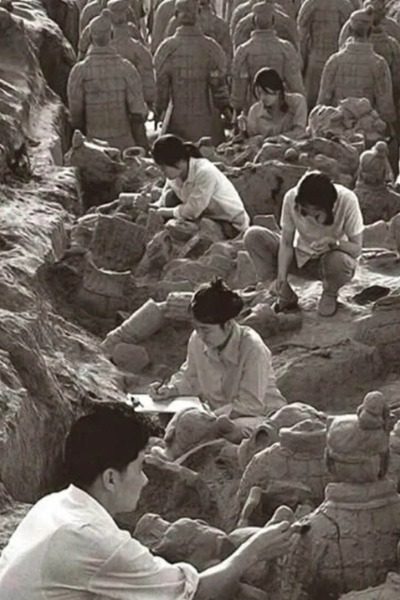
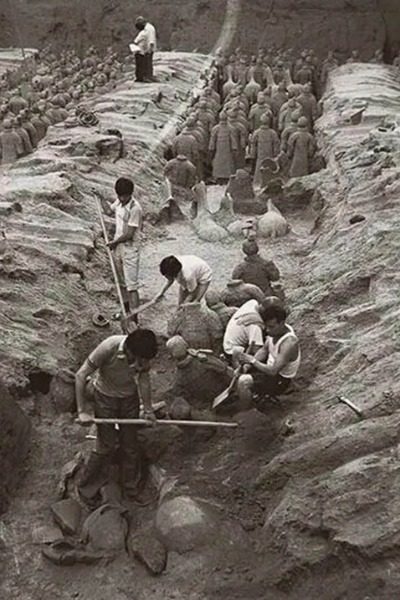
Lishan Garden 丽山园
Lishan Garden is adjacent to the Qin Terracotta Warriors Museum, together forming the Qin Emperor’s Mausoleum Museum. Inside Lishan Garden, you can visit important exhibition halls like the 9901 burial pit, the Bronze Chariot and Horse Museum, and the 0006 burial pit.
The K9001 burial pit showcases the entertainment life of Emperor Qin during his reign, featuring ancient court entertainment activities like strongmen and aerial acrobatics. At the Bronze Chariot and Horse Museum, you can see replicas of the bronze chariots used by Emperor Qin, along with jaw-dropping bronze casting techniques and various riveting methods. Most visitors feel that Lishan Garden is just as stunning as the Terracotta Warriors and is definitely worth a visit.
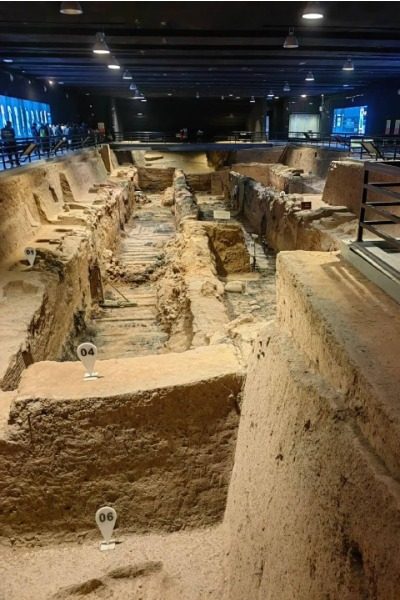
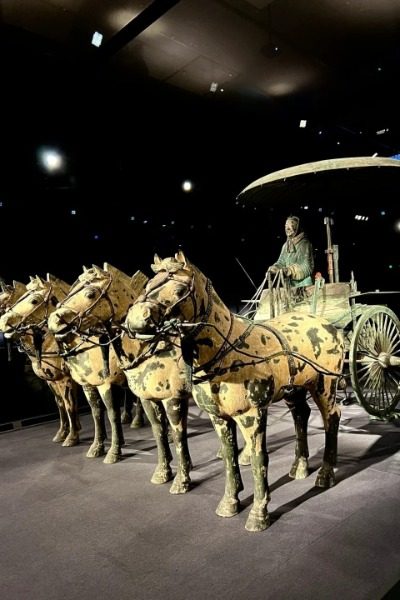
Terracotta Army Souvenirs
Exquisite Gifts for Family and Friends from Your Xi’an Trip
Terracotta Army Souvenir Figurines 兵马俑纪念品摆件
After visiting the Terracotta Army Pits One, Two, and Three, tourists can explore the cultural shops to buy souvenirs related to the army. There’s a wide variety of Terracotta Army figurines available, including ceramic pieces and alloy models. The ceramic souvenirs are usually made from kaolin clay and fired at high temperatures, giving them a smooth, durable glaze. You can purchase a beautiful Terracotta Army figurine as a keepsake from your Xi’an trip for just 20 to 100 yuan (about $3 to $15).

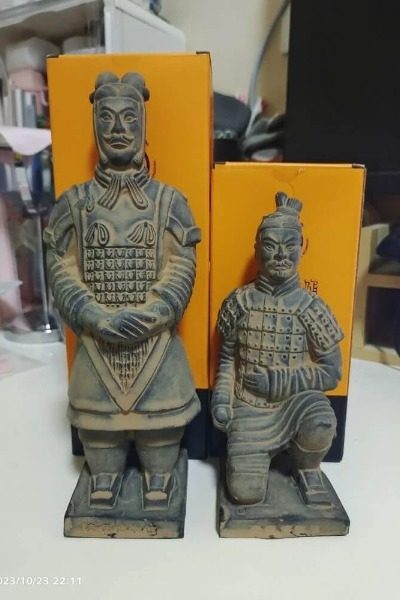
Q&A About the Terracotta Army
- Why have the Terracotta Warriors been preserved for so long?
The Terracotta Soldiers are made of clay that was fired at high temperatures, making them hard and durable. They were originally found as broken pieces, but after protection and restoration by archaeologists, they were put on display. - Why did Emperor Qin create so many Terracotta Warriors?
First, it followed the custom of burial figurines. Second, it showcased the strong military power of the Qin state. Third, he wanted to be emperor in both the living and the afterlife. After failing to find immortality in his later years, he believed he could dominate another world after death, so he made the warriors to ensure he’d still have a powerful army. - What is the manufacturing process of the Terracotta Warriors?
The production involves three steps: first, shaping a large initial form (rough draft) from clay, then adding more clay for detail and refinement. Finally, the separately made heads, hands, and bodies are assembled. They use a combination of molding and hand-sculpting techniques like piling, pinching, carving, and painting. After drying, the figures are fired in a kiln at about 1000 degrees, and then painted after being taken out. - How were the Qin Terracotta Army discovered?
In March 1974, villagers in Xiyang Village, Lintong, Shaanxi, accidentally found clay fragments while digging a well during a drought. Archaeologists later confirmed it was a large burial pit. In 1987, the Qin Emperor’s Mausoleum and the Qin Dynasty Terracotta Army were listed as a UNESCO World Heritage Site, recognized as the “Eighth Wonder of the World.”
Practical Travel Tips
- The ticket for the Terracotta Warriors includes the Lishan Garden, so make sure to check the time for your visit. Both places stop letting people in at 5:30 PM and clear out by 7 PM. Plan your time well!
- After you enter the Terracotta Warriors area, there’s an electric car that takes you to Pit 1 for 5 RMB per person. But honestly, it’s super close—just a five-minute walk. The car only takes a minute, so it’s not really necessary.
- If you’re heading to Lishan Garden, the 120 RMB ticket covers the bus ride between the Terracotta Warriors and Lishan Garden.
- Once you get to Lishan Garden, I suggest buying a shuttle ticket at the entrance (15 RMB each). If you don’t buy it, you’ll have to walk for over ten kilometers.
- Lishan Garden is huge. The shuttle stops at three points. The first two are the burial pits, which are pretty cool. The last stop is the Qin Emperor’s tomb (still under development), so you can skip getting off there. Just ride to the end, but if you get off, you’ll have to walk back.
- If you’re visiting during peak season, I recommend going to Lishan Garden first and then the Terracotta Warriors. Most tours hit the Terracotta Warriors first, so try going to Lishan Garden in the morning when it’s less crowded, then head to the Terracotta Warriors around three or four in the afternoon. By then, most tour groups will be at Lishan.
- At the Terracotta Warriors, definitely don’t buy jade! And don’t touch the jade items—be careful, or you might get scammed.
- The pits at the Terracotta Warriors don’t have AC, so in the summer, it can feel like a sauna. A small fan would be a great idea!
- The order to check out the pits is: Pit 1, then Pit 3, and finally Pit 2. You’ll spend about two hours there, and Lishan Garden takes about the same time.
- After visiting the Terracotta Warriors, you’ll walk through a long commercial street. There are plenty of food options where you can take a break and grab a bite before continuing your visit.
Hours and Fees
Hours
- 8:30 AM to 6:30 PM, with last entry at 5 PM. Closed every Monday.
Admission
- 120 CNY (about $17). The ticket covers entry to the Qin Terracotta Warriors Museum and Lishan Garden. It’s best to book at least 7 days in advance during peak season.
luggage Storage
- The free luggage storage is located in the left corridor of the ticketing center at the Terracotta Warriors Museum. There’s an official free storage area. Note that there are time limits for storage, usually from 8:30 AM to 5:30 PM for pick-up.
How to Get to Terracotta Army
By Bus
- You can take bus routes Y5 or 306 directly to the Terracotta Warriors from the Bell Tower bus station(钟楼公交站).
By Subway
- From downtown Xi’an, take Metro Line 9 and get off at Huaqingchi Station(华清池站). Exit from C, then walk 197 meters to the Huaqingchi bus stop(华清池公交站). From there, take the Lin Tong Y613 bus straight to the entrance of the Terracotta Warriors Museum.

